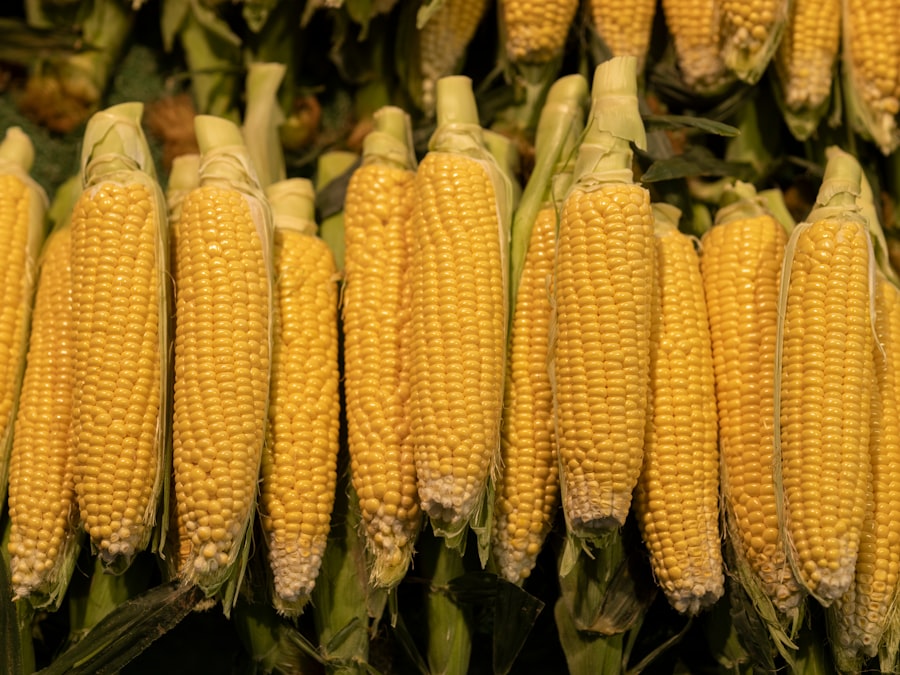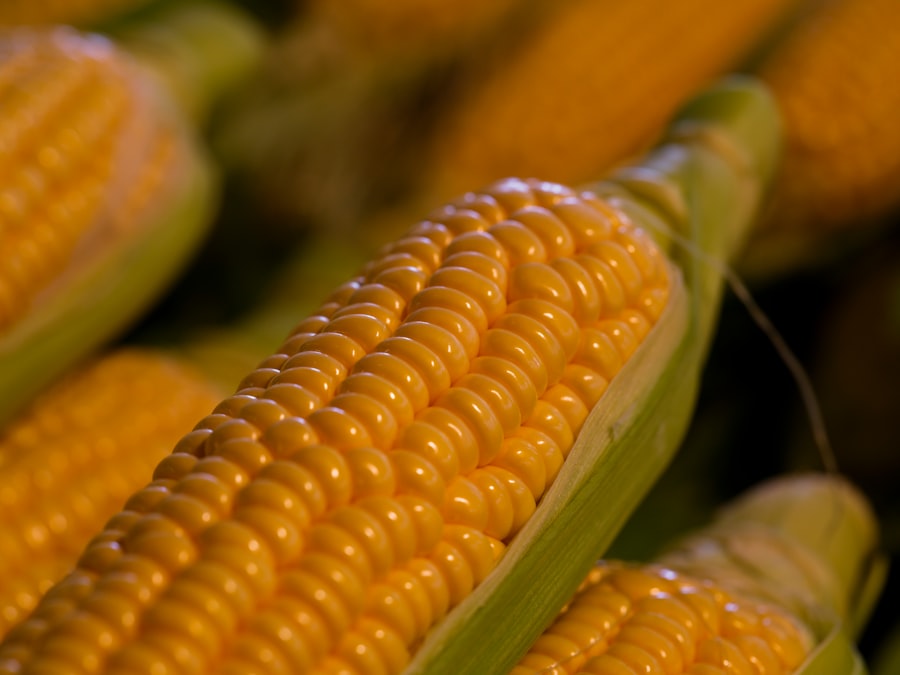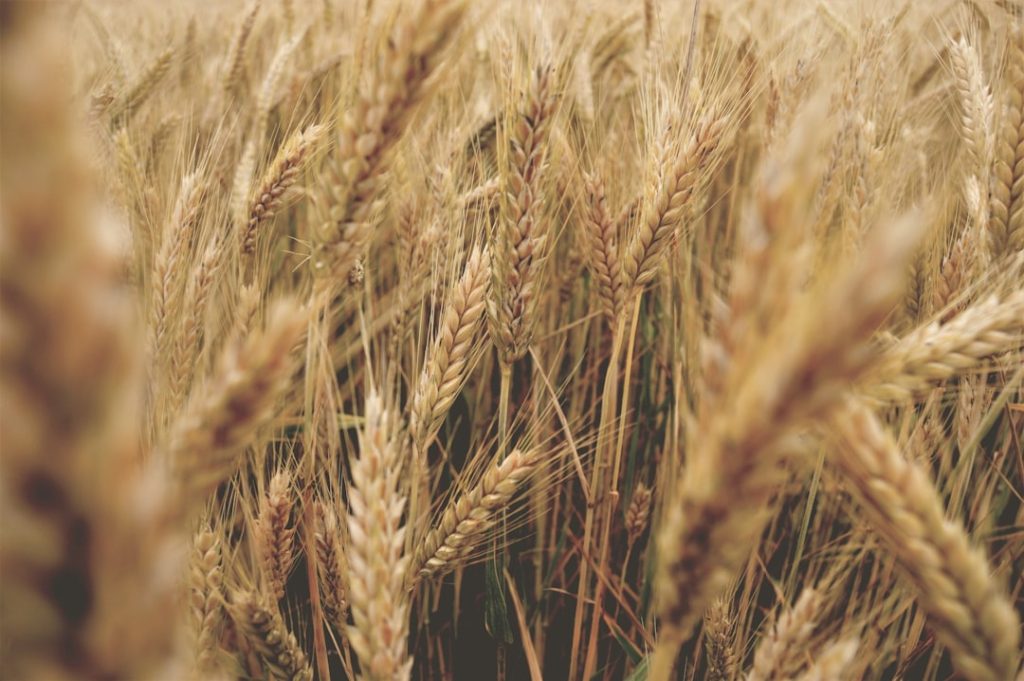Cracked corn is a common feed choice for chickens, particularly during colder seasons. It consists of corn kernels that have been mechanically broken into smaller fragments, enhancing digestibility for chickens. The taste and texture of cracked corn are generally appealing to chickens, making it a popular treat among poultry keepers.
Beyond its palatability, cracked corn provides nutritional value and can contribute to maintaining body heat in chickens during winter months. This article will examine the nutritional content of cracked corn for chickens, its role in thermoregulation, and how it compares to alternative feed options for warmth. Furthermore, the article will offer guidance on integrating cracked corn into a chicken’s diet and address potential disadvantages of using cracked corn as a heat-generating feed.
Table of Contents
- 1 Nutritional Benefits of Cracked Corn for Chickens
- 2 The Role of Cracked Corn in Maintaining Body Heat for Chickens
- 3 Comparing Cracked Corn to Other Feed Options for Warmth
- 4 Tips for Incorporating Cracked Corn into a Chicken’s Diet for Warmth
- 5 Potential Drawbacks of Using Cracked Corn for Warmth
- 6 The Overall Impact of Cracked Corn on Keeping Chickens Warm
- 7 FAQs
Key Takeaways
- Cracked corn is a popular feed option for chickens, especially during the colder months, as it helps to maintain body heat and provides essential nutrients.
- Nutritional benefits of cracked corn for chickens include being a good source of carbohydrates, protein, and essential nutrients like vitamin B and fiber.
- Cracked corn plays a crucial role in maintaining body heat for chickens, as it is a high-energy feed that helps to keep them warm during cold weather.
- When comparing cracked corn to other feed options for warmth, it is important to consider its high energy content and potential impact on overall diet balance.
- Tips for incorporating cracked corn into a chicken’s diet for warmth include mixing it with other feeds, offering it as a treat, and ensuring access to fresh water at all times.
- Potential drawbacks of using cracked corn for warmth include the risk of overfeeding and potential imbalance in the chicken’s overall diet.
- In conclusion, cracked corn can have a positive impact on keeping chickens warm, but it should be used in moderation and as part of a balanced diet to ensure the overall health of the chickens.
Nutritional Benefits of Cracked Corn for Chickens
Nutritional Benefits
In addition to carbohydrates, cracked corn contains essential nutrients such as protein, fiber, and various vitamins and minerals. These nutrients are crucial for maintaining the overall health and well-being of chickens, especially during times of increased energy expenditure, such as in cold weather. The high carbohydrate content in cracked corn also helps to keep chickens feeling full and satisfied, which can be particularly beneficial during the winter when foraging for food may be more challenging. Furthermore, cracked corn is an excellent source of dietary fiber, which supports healthy digestion in chickens.
Convenience and Cost-Effectiveness
Cracked corn is also a cost-effective feed option for poultry owners, as it is readily available and relatively inexpensive compared to other types of feed. This makes it an attractive choice for those looking to provide their chickens with a nutritious and warming diet without breaking the bank. Additionally, cracked corn can be easily stored for long periods without spoiling, making it a convenient option for poultry owners who want to stock up on feed for the winter months.
Practicality and Accessibility
Its long shelf life also makes it a practical choice for those living in remote areas or with limited access to feed stores. Overall, the nutritional benefits and cost-effectiveness of cracked corn make it a popular choice for keeping chickens healthy and warm during the winter.
The Role of Cracked Corn in Maintaining Body Heat for Chickens

One of the key benefits of cracked corn for chickens is its ability to help maintain body heat during cold weather. When chickens consume cracked corn, the carbohydrates in the feed are broken down into glucose, which is then used by the body as a source of energy. This process generates heat within the chicken’s body, helping to keep them warm in low temperatures.
Additionally, the act of digesting food itself produces heat as a byproduct, further contributing to the chicken’s overall body temperature. This is particularly important for chickens during the winter months when they need to expend more energy to stay warm. By providing chickens with cracked corn, poultry owners can help ensure that their flock stays comfortable and healthy even in chilly weather.
In addition to providing warmth through energy production, cracked corn also plays a role in insulating chickens from the cold. The act of digesting food increases blood flow to the digestive system, which in turn helps to distribute heat throughout the body. This increased circulation can help chickens maintain a stable body temperature even when exposed to cold temperatures.
Furthermore, the high fat content in cracked corn can provide an additional layer of insulation for chickens, helping to keep them warm in harsh weather conditions. Overall, cracked corn serves as an effective tool for maintaining body heat in chickens, making it an invaluable feed option during the winter months.
Comparing Cracked Corn to Other Feed Options for Warmth
While cracked corn is a popular choice for keeping chickens warm during the winter, there are other feed options that can also provide similar benefits. Whole corn, for example, offers many of the same nutritional benefits as cracked corn and can be an effective source of warmth for chickens. However, whole corn may be more difficult for chickens to digest compared to cracked corn, as the larger kernels require more effort to break down.
Additionally, whole corn may not be as readily available as cracked corn and could be more expensive due to processing costs. Another alternative feed option for warmth is high-fat seeds such as sunflower seeds or flaxseeds. These seeds are rich in fats, which can provide chickens with a valuable source of energy and insulation during cold weather.
However, these seeds may be more expensive than cracked corn and may not be as readily accepted by all chickens. In contrast to these options, commercial poultry feeds are formulated to provide chickens with a balanced diet that meets all of their nutritional needs, including warmth during cold weather. These feeds often contain a mix of grains, proteins, vitamins, and minerals that are specifically designed to support chicken health and well-being.
While commercial feeds may be more expensive than cracked corn or other whole grains, they offer the convenience of providing all necessary nutrients in one package. Ultimately, the best feed option for warmth will depend on factors such as availability, cost, and individual chicken preferences.
Tips for Incorporating Cracked Corn into a Chicken’s Diet for Warmth
When incorporating cracked corn into a chicken’s diet for warmth, there are several important considerations to keep in mind. Firstly, it’s essential to ensure that cracked corn is offered in moderation as part of a balanced diet. While cracked corn provides valuable energy and warmth for chickens, it should not make up the entirety of their diet.
Instead, cracked corn should be offered alongside other feed options such as commercial poultry feed, whole grains, and fresh fruits and vegetables to ensure that chickens receive all necessary nutrients. Additionally, cracked corn can be offered as a treat or supplement rather than a primary feed source to prevent overconsumption. Another important tip for incorporating cracked corn into a chicken’s diet is to consider the age and health status of the flock.
Younger chickens may benefit from smaller pieces of cracked corn or even ground corn to make digestion easier. Similarly, older or less active chickens may require less cracked corn compared to younger or more active birds. It’s important to monitor individual chicken’s consumption and adjust accordingly to prevent overfeeding or underfeeding.
Additionally, cracked corn should be stored in a cool, dry place to prevent spoilage and maintain its nutritional value.
Potential Drawbacks of Using Cracked Corn for Warmth

Protein Deficiencies
One potential issue with using cracked corn as a primary feed source is its relatively low protein content compared to other feed options. Protein is essential for muscle development and overall health in chickens, so relying too heavily on cracked corn could lead to protein deficiencies over time.
Balancing the Diet
To mitigate this risk, poultry owners should ensure that their flock receives a balanced diet that includes adequate protein from sources such as commercial poultry feed or supplemental protein sources.
The Risks of Overfeeding
Another potential drawback of using cracked corn for warmth is the risk of overfeeding and weight gain in chickens. Cracked corn is high in carbohydrates and calories, which can lead to excessive weight gain if not fed in moderation. Overweight chickens are at risk of various health issues such as heart problems and joint pain, so it’s important to monitor their consumption of cracked corn carefully. Additionally, overweight chickens may have difficulty regulating their body temperature effectively, which could negate the warming benefits of cracked corn.
The Overall Impact of Cracked Corn on Keeping Chickens Warm
In conclusion, cracked corn is a valuable feed option for keeping chickens warm during the winter months due to its nutritional benefits and ability to maintain body heat. Its high carbohydrate content provides chickens with essential energy while its insulation properties help them stay comfortable in cold weather. While there are alternative feed options available for warmth, cracked corn remains a popular choice due to its cost-effectiveness and availability.
When incorporating cracked corn into a chicken’s diet, it’s important to do so in moderation and alongside other feed options to ensure a balanced diet. While there are potential drawbacks to using cracked corn such as low protein content and risk of overfeeding, these can be mitigated with careful monitoring and supplementation with other nutrient-rich feeds. Overall, cracked corn serves as an effective tool for keeping chickens warm and healthy during the winter months when they need extra energy and insulation.
By understanding its nutritional benefits and potential drawbacks, poultry owners can make informed decisions about incorporating cracked corn into their flock’s diet for warmth. With proper care and consideration, cracked corn can be a valuable asset in ensuring that chickens stay comfortable and thriving even in chilly weather conditions.
If you’re interested in learning more about keeping chickens warm, you might also want to check out this article on how big a coop needs to be for a chicken. Understanding the size requirements for a chicken coop can help ensure that your chickens have enough space to stay warm and comfortable during the colder months.
FAQs
What is cracked corn?
Cracked corn is a type of feed made from dried and cracked kernels of corn. It is commonly used as a supplemental feed for poultry and livestock.
Does cracked corn keep chickens warm?
Cracked corn can provide some warmth for chickens when they digest it. The process of digesting cracked corn generates heat in the chicken’s body, which can help keep them warm in cold weather.
Is cracked corn a sufficient source of warmth for chickens?
While cracked corn can provide some warmth for chickens, it is not a sufficient source of warmth on its own. Chickens also need access to shelter, bedding, and other sources of heat to stay warm in cold weather.
How should cracked corn be fed to chickens in cold weather?
Cracked corn can be fed to chickens as part of a balanced diet in cold weather. It should be offered in moderation, along with other sources of nutrition and warmth such as shelter, bedding, and supplemental heat sources.
Are there any risks associated with feeding cracked corn to chickens in cold weather?
Feeding cracked corn to chickens in cold weather can increase their energy levels and help them stay warm, but it should be done in moderation. Overfeeding cracked corn can lead to obesity and other health issues in chickens.
Meet Walter, the feathered-friend fanatic of Florida! Nestled in the sunshine state, Walter struts through life with his feathered companions, clucking his way to happiness. With a coop that’s fancier than a five-star hotel, he’s the Don Juan of the chicken world. When he’s not teaching his hens to do the cha-cha, you’ll find him in a heated debate with his prized rooster, Sir Clucks-a-Lot. Walter’s poultry passion is no yolk; he’s the sunny-side-up guy you never knew you needed in your flock of friends!








